
If you’re shopping for bass pickups, but not quite sure what you’re looking for…
Or how to tell the difference between one model and the next…
You’ve come to the right place.
Because in this ultimate guide, you’re about to get a crash-course in everything a bass player would care to know, when upgrading their pickups.
First up…
The 3 Mainstream Bass Pickup Brands to Know
Currently there are 3 noteworthy competitors in the bass pickup industry:
- Seymour Duncan
- DiMarzio
- EMG
Each of these companies were founded roughly at the same time, in the mid 1970’s…
When rock music started getting louder and louder…sparking an ever increasing demand by musicians for more volume.
These days, when shopping for bass pickups, there’s about a 99% certainty that you will choose between one of these 3.
So as we go through this post and learn about the different types of pickups, we’ll give several examples from each of these brands.
So let’s continue. Up next..
Single Coil vs Split vs Humbucker Magnetic Pickups
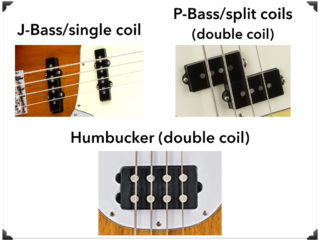
The 3 common variations of bass pickups are:
- Single Coil – famously featured on the Fender J-Bass, which has a thinner sound, with more noise.
- Split Coil – famously featured on the Fender P-Bass, which is essentialy two single coils side by side
- Double Coil Humbucker – which has the fattest sound, least noise, highest output, longest sustain, and is a common choice for custom pickup upgrades
When you look at the stats, you might assume that humbuckers are superior to single and split coils in every way. And technically you’d be right.
However, because these two iconic basses were used for many decades prior to the invention of humbuckers, their iconic sound has been tightly integrated into the ears of musicians around the world.
So even today, they are still about equally as popular as humbuckers.
To hear the differences for yourself, check out this video:
So here are the passive pickups I recommend:
- J-Bass/Single Coil
- P-Bass/Humbucker
- PJ-Bass/Split+Single Coil
Up next…
Active vs Passive Pickups: Which is Preferred for Bass?
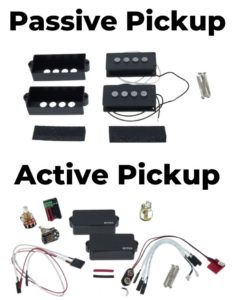
Pickups are powered using 1 of 2 methods:
- passive – with magnets ONLY
- active – with magnets, and boosted by a preamp
Originally, all pickups were passive…until the invention of active pickups back in the 70’s. These two technologies have been competing ever since.
Advantages to active pickups include:
- greater tonal clarity
- more tonal consistency at different volumes
- better reach over long cables
- stronger amp overdrive
Bass players especially, like them for their:
- cleaner signal
- wider frequency range
- sharper attack
- added sustain
- extra headroom
As you can see, the benefits of active pickups go on and on. Objectively, they win in almost every comparison.
Which is why they are highly preferred by bass players, when upgrading from the stock pickups that came with their bass.
So here are the active models I recommend:
- Both Single-Coil and Humbucker
Up next…
Al-Ni-Co Magnets: How They Influence Your Sound
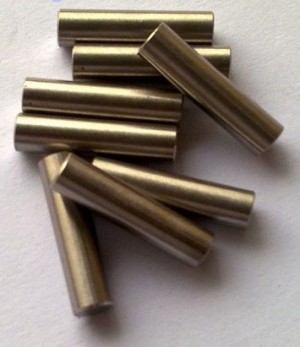
Another major factor affecting your pickup’s output and tone is the magnets themselves.
Particularly, the magnet’s layout and material.
The 3 most popular layouts:
- Individual magnetic poles – which have a thinner, brighter sound, and are commonly used on Fender guitars and other single coil pickups.
- Steel poles extending from a magnetic bar – which have a fatter, dark sound, and are commonly used on Gibson guitars and other humbucking pickups.
- Blade style – which replaces the individual pole pieces with a single metal bar, and is known to have more consistency with string bends.
Typically, the individual magnets are made from some variation of a metal alloy known as “Al-Ni-Co” which blends aluminum, nickel, and cobalt.
The 4 most common blends of Alnico are:
- Alnico 3 – which has a soft gentle tone and the weakest magnetic pull.
- Alnico 2 – which has a similar vintage tone, but with a slightly stronger output than Alnico 3’s.
- Alnico 5 – which has an even higher output and bolder sound
- Alnico 8 – which has the most aggressive heavy sound of all, and the strongest magnetic pull.
Up next…
Piezoelectric Pickups: Do They Work Well On Bass?
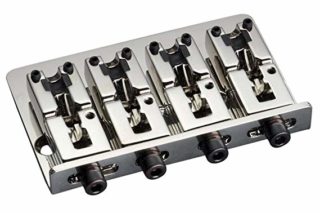
Commonly found on acoustic-electric guitars, piezoelectric pickups can surprisingly now be found on basses as well.
Built inside the bridge, these pickups sense pressure changes produced by the strings.
Compared to magnetic pickups, the piezo sound is much brighter, with more attack.
While originally just an experiment, the result was so compelling that some manufacturers simply started building their basses with piezo pickups included, alongside their standard magnetic ones. Such as these for example:
To see what kinds of sounds you can get by blending them together, check out this video:
If that’s the sound you’re after, here are the ones I recommend:
- GraphTec Ghost (single string) – (Amazon)
A word of caution though: You will have to do a bit of work to install these, so if you’re not the do-it-yourself type, you may need to hire a pro.
Up next…
Optical Bass Pickups
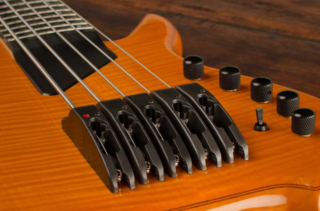
While optical pickups have been around for nearly 50 years now…
It wasn’t until the early 2000’s that people starting using them on basses and guitars.
While they aren’t yet nearly as popular as the pickup designs we covered earlier, they do have some unquestionable advantages:
- Immunity to Noise/Hum
- Broader Frequency Range
- Flatter Response
- Longer Sustain
All these advantages and more, are due to the fact that optical pickups only see what the strings are doing, without actually influencing their motion (like magnetic pickups do).
Once again though, stats aren’t everything, as most musicians still prefer the dirty sound of the traditional pickup designs they’ve become accustomed to.
The main company to built optical pickups for bass guitars right now is Lightwave, which builds them for the brand Willcox Guitars.
Up next…
Bass Pickup Placement: The Bridge vs Neck
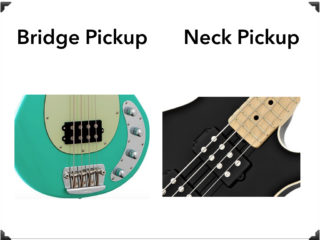
Now that we’ve covered pickup types, it makes sense to move along to the subject of their location.
Luckily, this part is pretty simple.
- When Closer to the Neck – the sound will be muddier, but with more “oomph”
- When Closer to the Bridge – the sound will be brighter, with a sharper attack.
To give you maximum control over your own sound, basses typically have 2 pickups that you can use either individually, or blended in combination.
Up next…
How to Change Your Bass Pickups
Changing your bass’ pickups yourself is not too complicated and as long as you have the right tools and instructions you’re good to go.
Watch this video to learn how to do it:
By the way, if you found this post useful, I highly recommend joining our free Home Recording Secrets email newsletter where you’ll discover….
- How to Get Your First Studio Up and Running in a Single Weekend
- How to Avoid Wasting Thousands of Dollars on Unnecessary Pointless Purchases
- How to Get a “Million Dollar” Pro Studio Sound in a “Thousand Dollar” Home Studio
- PLUS… All Sorts of Other Amazing Insider Secrets Revealed
And it’s totally FREE! Click here and Enter Your Email to Sign Up.
More Guitar Posts in This Series:
Electric Guitar | Acoustic Guitar | Bass Guitar | Amps | Pedals | Cables | Pickups | Bass Strings | Bass Amps | Bass Pickups | Classical Guitars | Acoustic Pickups | Direct Boxes | Cases | Picks | Slides | Straps | Tuners | Stands | Strings | Capos | Tabs | Guitar Accessories